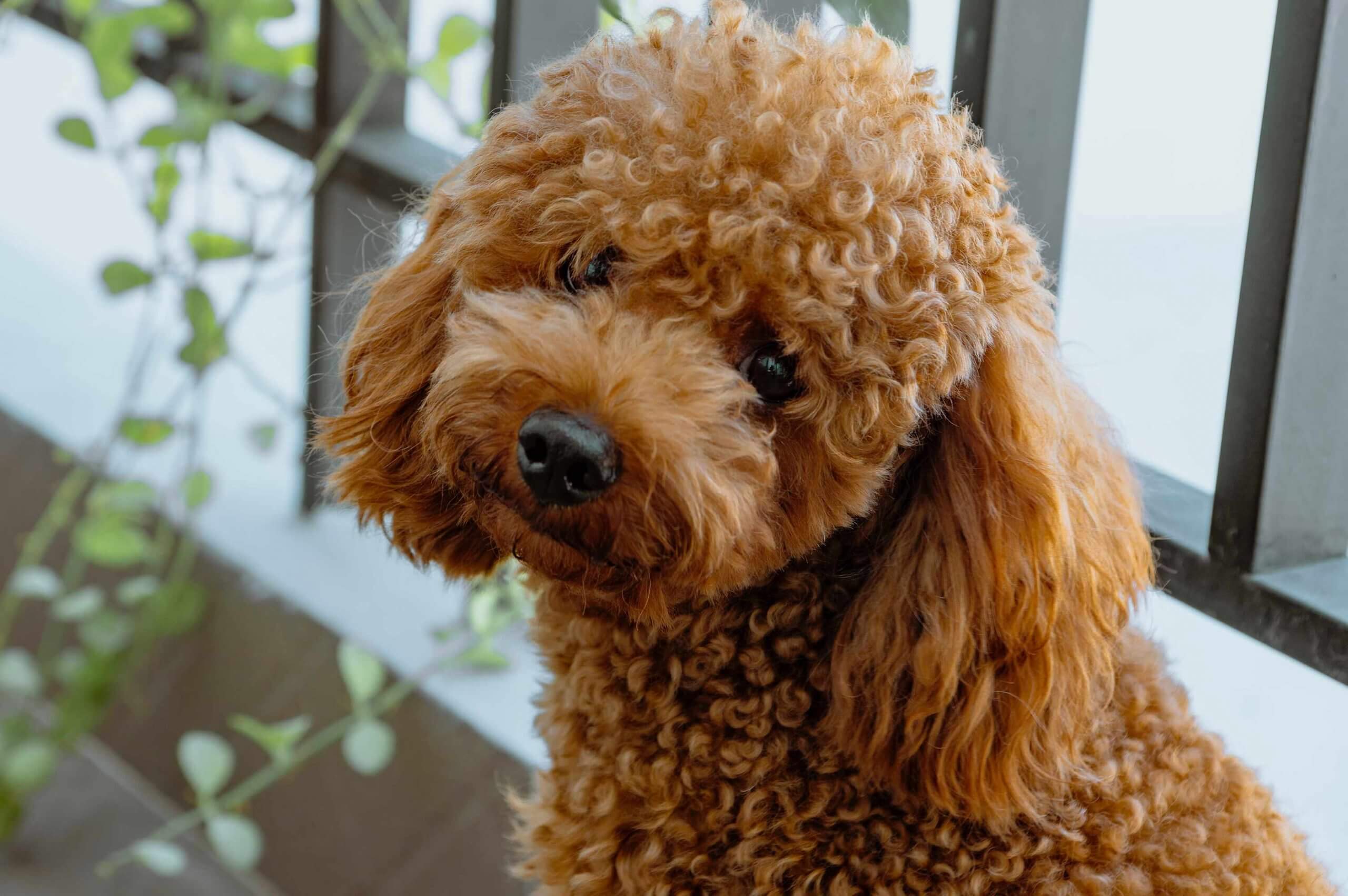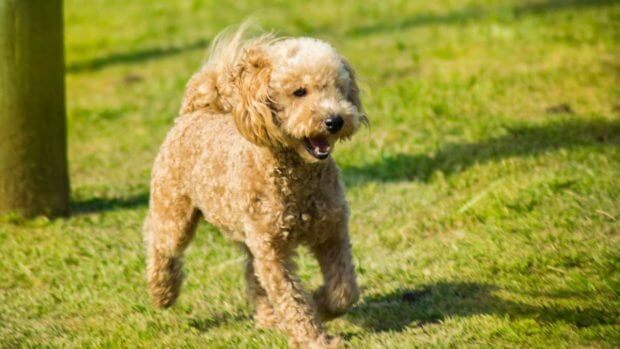The Toy Poodle: Characteristics and Curiosities


Written and verified by the veterinarian and zootechnician Sebastian Ramirez Ocampo
The toy poodle is a canine native to France, Russia, and Germany. It’s the result of crossing the standard poodle with other breeds such as the Maltese and the Spaniel. By the 15th century, it was considered an exclusive dog of royalty and aristocracy, although in the present it’s still synonymous of status among the population.
Nowadays, it’s common to see them in different dog shows around the world, with the “toy” variety one of the most sought after among poodle owners. Because of their friendly temperament and great intelligence, toy poodles are the ideal companion for any family looking for a pet. Below, you’ll find the main characteristics of the breed and some curiosities that you’ll enjoy finding out about.
Physical characteristics of the toy poodle
It’s mainly identified by its size, which ranges from 25 to 28 centimeters long (10 to 11 inches) and weighs approximately 4 kilograms (around 9 pounds). Its muzzle is thin and it has a long neck, with an abundant and curly coat. It can be found in various colors such as gray, silver, brown, and cream.
Despite its size, its limbs are strong and muscular, which it inherited from its swimming ancestors. Its main distinguishing feature is its coat, which is composed of a thick outer layer and a softer, woolly undercoat.

Reproduction
The female’s first heat occurs between seven and nine months of age, lasting approximately 15 to 20 days. During this stage, some behavioral changes and some hemorrhagic vaginal discharge may be observed. The gestation of toy poodles is 61 to 62 days, with four to ten puppies per litter.
Toy poodle behavior
This breed is characterized by its affable and calm temperament. Likewise, they’re cheerful and active animals that tend to easily learn training commands. Likewise, they work very well as guardians, since they’re always alert to any unexpected visit.
In some parts of Germany, they are even used for hunting small birds. In addition, they usually coexist very well with other kinds of dogs and with people, as long as they’re given the necessary exercise.
Health and welfare
A toy poodle free of serious diseases and with the necessary care can live between eleven to twelve years. According to several investigations, the main causes of death are cancer, old age, and heart and kidney diseases. Similarly, they can develop eye, skin, and musculoskeletal diseases such as patellar luxation and hip dysplasia.
However, with proper care and regular visits to the veterinarian, most of these pathologies can be detected and treated in time. It’s important to have check-ups every 6 months with your trusted vet to ensure your pet’s welfare. Finally, due to the growth of their coat, poodles should be brushed and combed constantly, to avoid the formation of knots in their hair.

Curiosities
Due to their easy adaptability, intelligence, and quick learning, poodles are considered the second most intelligent breed of dogs nowadays, only surpassed by the Border Collie. On the other hand, these canines don’t shed hair like other types of dogs, making them ideal for homes with allergic people.
The longest-lived toy poodle in history was a dog named Uncle Chichi, who lived to be 26 years old. Finally, this is one of the few dog breeds that have been cloned, as stated in the scientific article “A cloned toy poodle produced from somatic cells derived from an aged female dog“.
The toy poodle is a canine native to France, Russia, and Germany. It’s the result of crossing the standard poodle with other breeds such as the Maltese and the Spaniel. By the 15th century, it was considered an exclusive dog of royalty and aristocracy, although in the present it’s still synonymous of status among the population.
Nowadays, it’s common to see them in different dog shows around the world, with the “toy” variety one of the most sought after among poodle owners. Because of their friendly temperament and great intelligence, toy poodles are the ideal companion for any family looking for a pet. Below, you’ll find the main characteristics of the breed and some curiosities that you’ll enjoy finding out about.
Physical characteristics of the toy poodle
It’s mainly identified by its size, which ranges from 25 to 28 centimeters long (10 to 11 inches) and weighs approximately 4 kilograms (around 9 pounds). Its muzzle is thin and it has a long neck, with an abundant and curly coat. It can be found in various colors such as gray, silver, brown, and cream.
Despite its size, its limbs are strong and muscular, which it inherited from its swimming ancestors. Its main distinguishing feature is its coat, which is composed of a thick outer layer and a softer, woolly undercoat.

Reproduction
The female’s first heat occurs between seven and nine months of age, lasting approximately 15 to 20 days. During this stage, some behavioral changes and some hemorrhagic vaginal discharge may be observed. The gestation of toy poodles is 61 to 62 days, with four to ten puppies per litter.
Toy poodle behavior
This breed is characterized by its affable and calm temperament. Likewise, they’re cheerful and active animals that tend to easily learn training commands. Likewise, they work very well as guardians, since they’re always alert to any unexpected visit.
In some parts of Germany, they are even used for hunting small birds. In addition, they usually coexist very well with other kinds of dogs and with people, as long as they’re given the necessary exercise.
Health and welfare
A toy poodle free of serious diseases and with the necessary care can live between eleven to twelve years. According to several investigations, the main causes of death are cancer, old age, and heart and kidney diseases. Similarly, they can develop eye, skin, and musculoskeletal diseases such as patellar luxation and hip dysplasia.
However, with proper care and regular visits to the veterinarian, most of these pathologies can be detected and treated in time. It’s important to have check-ups every 6 months with your trusted vet to ensure your pet’s welfare. Finally, due to the growth of their coat, poodles should be brushed and combed constantly, to avoid the formation of knots in their hair.

Curiosities
Due to their easy adaptability, intelligence, and quick learning, poodles are considered the second most intelligent breed of dogs nowadays, only surpassed by the Border Collie. On the other hand, these canines don’t shed hair like other types of dogs, making them ideal for homes with allergic people.
The longest-lived toy poodle in history was a dog named Uncle Chichi, who lived to be 26 years old. Finally, this is one of the few dog breeds that have been cloned, as stated in the scientific article “A cloned toy poodle produced from somatic cells derived from an aged female dog“.
All cited sources were thoroughly reviewed by our team to ensure their quality, reliability, currency, and validity. The bibliography of this article was considered reliable and of academic or scientific accuracy.
- Jang G, Hong SG, Oh HJ, Kim MK, Park JE, Kim HJ, et al. A cloned toy poodle produced from somatic cells derived from an aged female dog. Theriogenology. 2008;69(5):556-63.
- Takeda M, Arai N, Koketsu Y, Mizoguchi Y. Factors associated with canine skin extensibility in toy poodles. The Journal of veterinary medical science. 2022;84(2):282-8.
- FCI. FEDERATION CYNOLOGIQUE INTERNATIONALE- CANICHE. 2010.
This text is provided for informational purposes only and does not replace consultation with a professional. If in doubt, consult your specialist.








